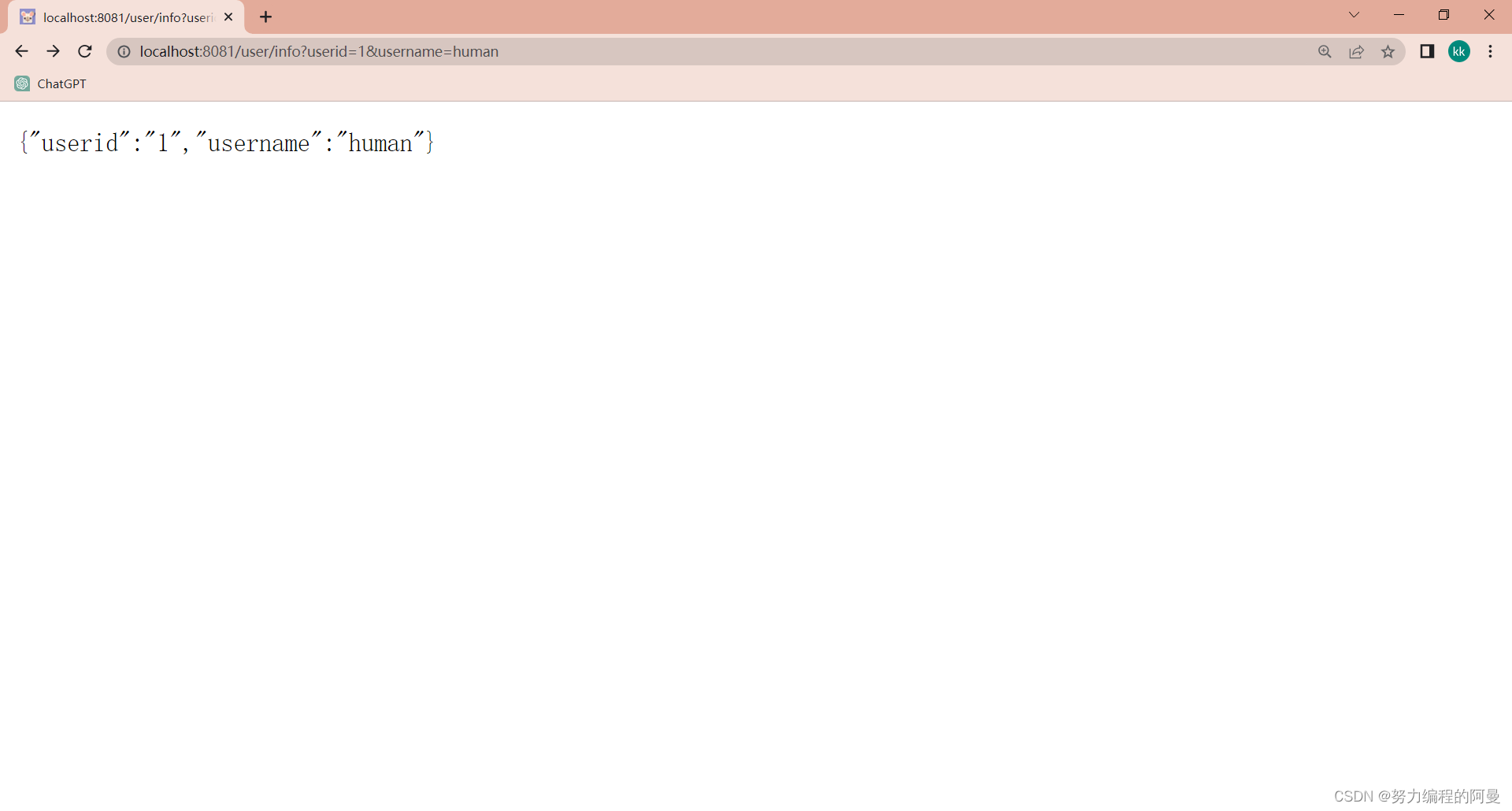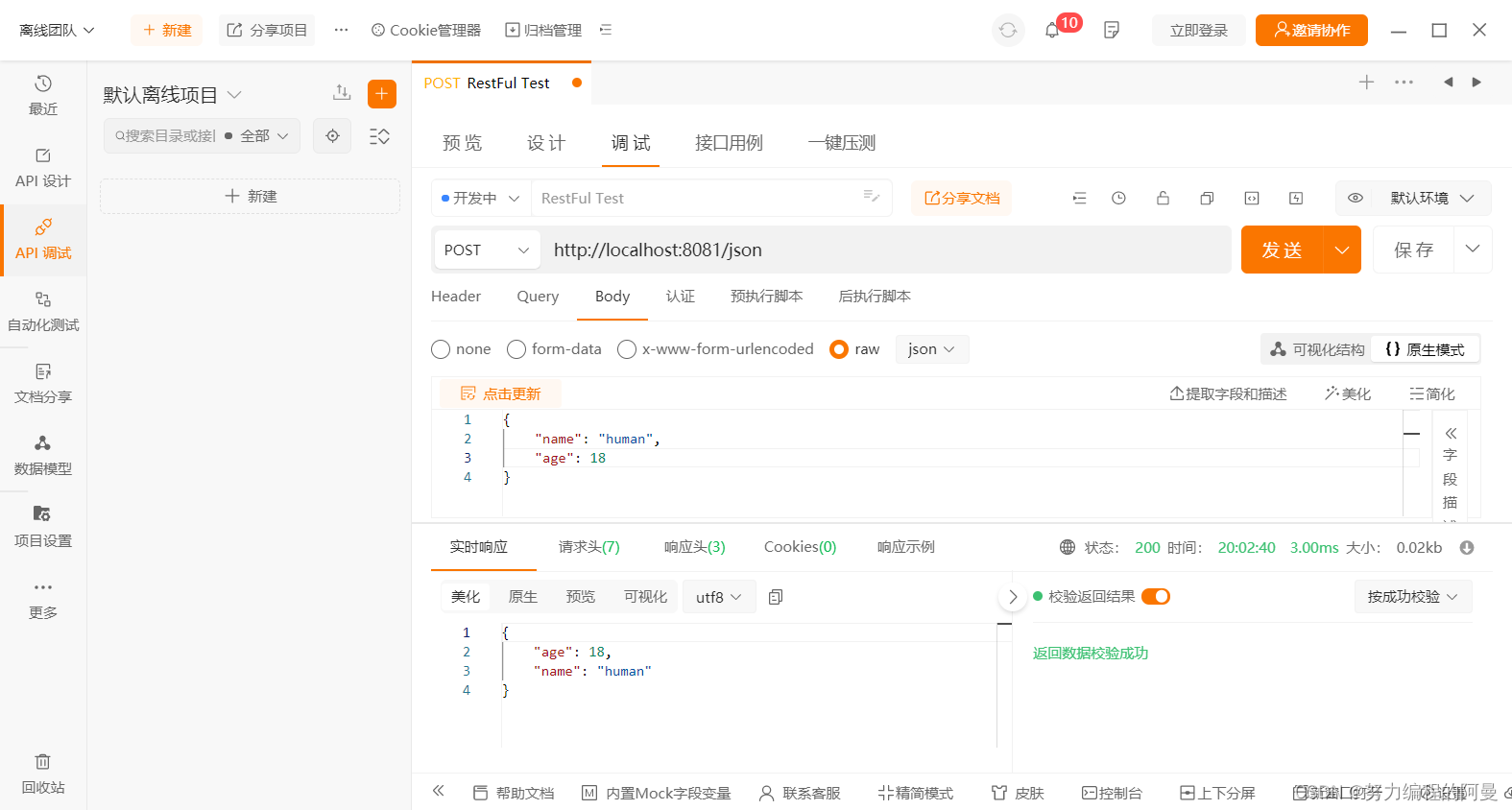Golang中Gin框架学习记录——(三)
5、获取请求参数
在Go语言中,获取请求参数非常的简单
对于接受前端的数据有两种方式,比如这里接受userid和username,可以有usl?userid=xxx&username=xxx或者/user/info/xxx/xxx,对于前者我们可以使用Query函数来完成譬如以下代码块
//usl?userid=xxx&username=xxx ginServer.GET("/user/info", func(context *gin.Context) { userid := context.Query("userid") username := context.Query("username") context.JSON(http.StatusOK, gin.H{ "userid": userid, "username": username, }) })
运行以后通过浏览器可以看到结果

对于后者,可以使用param函数来完成,如以下代码块
// /user/info/xxx/xxx ginServer.GET("/user/info/:userid/:username", func(context *gin.Context) { //冒号可以直接把userid和username取出来使用 userid := context.Param("userid") username := context.Param("username") context.JSON(http.StatusOK, gin.H{ "userid": userid, "username": username, }) })
最后也可以在浏览器中看到结果

当然,前端也可以为后端传递一个JSON,首先使用POST接受前端的请求,前端传来一个JSON数据并进行操作,获取JSON使用GetRawData函数来完成,这个函数返回两个值,一个是我们所需要的data另一个是产生的erro,然后使用map类型的对象来接受,前端一般传来一个string和一个object,object使用interface(空接口)来接收(它可以接受一切数据),然后使用JSON来解析
如以下的代码块
//前端给后端传递JSON ginServer.POST("/json", func(context *gin.Context) { //request body b, _ := context.GetRawData() //Go语音的body用map接受 var m map[string]interface{} //包装json数据 []byte _ = json.Unmarshal(b, &m) context.JSON(http.StatusOK, m) })
使用apipost进行测试得到结果

接着还有表单,如下面的form表单
<!DOCTYPE html> <html lang="en"> <head> <meta charset="UTF-8"> <title>我的GO web页面</title> <link rel="stylesheet" href="/static/css/style.css"> <script src="/static/js/commom.js"></script> </head> <body> <h1>hello world!</h1> <form action="/user/add" method="post"> <p>username:<input type="text" name="username"></p> <p>password:<input type="text" name="password"></p> <button type="submit"> 提交 </button> </form> 后端的数据为 {{.msg}} </body> </html>
同样使用POST来接收数据,并使用PostForm来对表单进行处理,如以下的代码
ginServer.POST("/user/add", func(context *gin.Context) { username := context.PostForm("username") password := context.PostForm("password") //取出username和password context.JSON(http.StatusOK, gin.H{ "msg": "ok", "username": username, "password": password, }) })
可以在浏览器中看到

输入username和password后提交可以看到

在context.JSON中或者获取到username和password后可以对我们的username和password进行校验等操作 (因为这里的post的参数为函数)





【推荐】国内首个AI IDE,深度理解中文开发场景,立即下载体验Trae
【推荐】编程新体验,更懂你的AI,立即体验豆包MarsCode编程助手
【推荐】抖音旗下AI助手豆包,你的智能百科全书,全免费不限次数
【推荐】轻量又高性能的 SSH 工具 IShell:AI 加持,快人一步
· 无需6万激活码!GitHub神秘组织3小时极速复刻Manus,手把手教你使用OpenManus搭建本
· Manus爆火,是硬核还是营销?
· 终于写完轮子一部分:tcp代理 了,记录一下
· 别再用vector<bool>了!Google高级工程师:这可能是STL最大的设计失误
· 单元测试从入门到精通